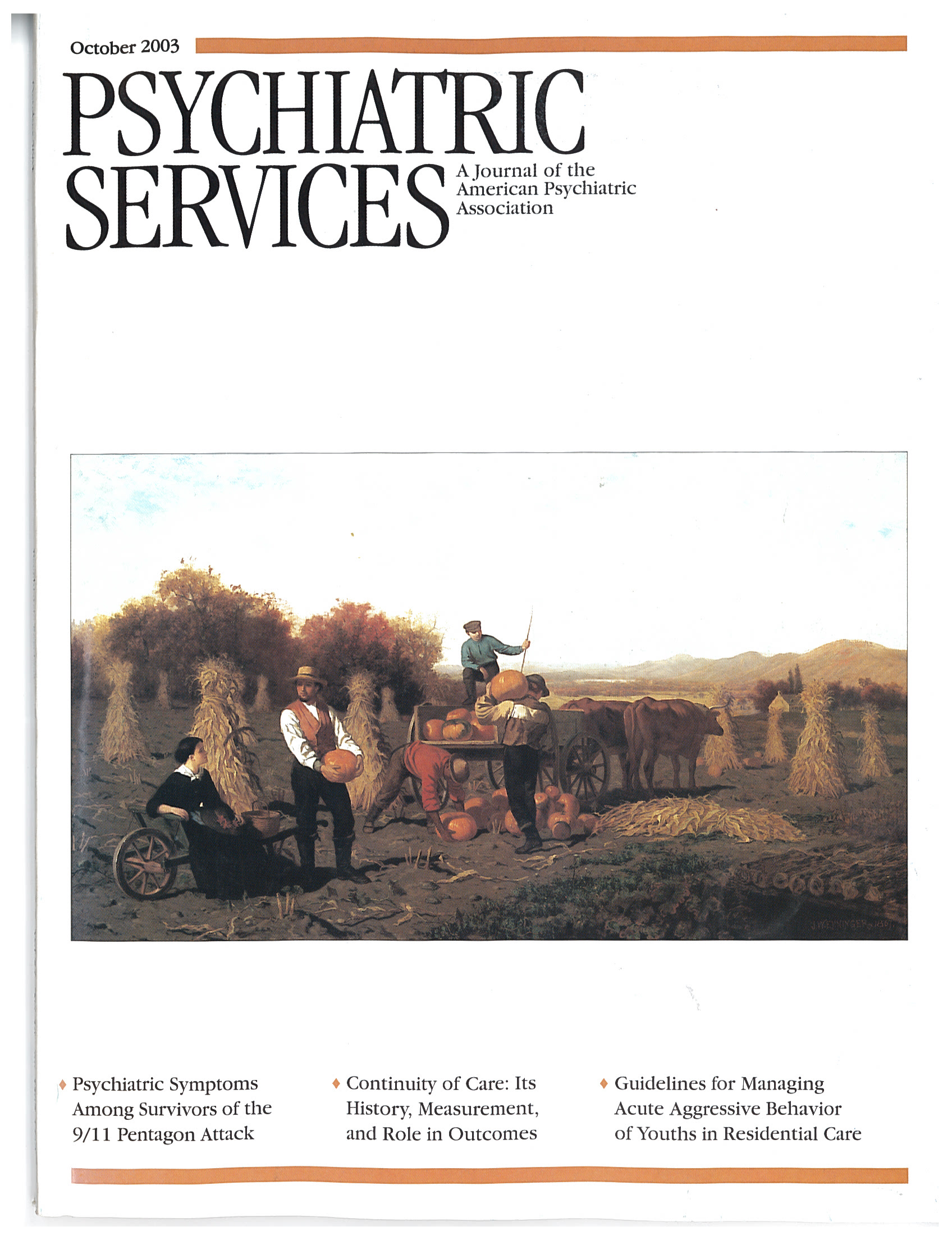This Month's Highlights
Terrorism and Mental Health
Two companion articles in this issue report the results of studies of emotional and behavioral effects of terrorist activities in the Washington, D.C., area: the September 11, 2001, attack on the Pentagon and the October 2002 sniper attacks. Thomas A. Grieger, M.D., and his coauthors examined posttraumatic stress disorder (PTSD), alcohol use, and perceptions of safety among 77 survivors of the Pentagon attack after seven months (see page 1380) and, in a separate study, assessed similar variables to determine the emotional and behavioral effects of the sniper attacks among 382 staff at a large tertiary care military hospital (see page 1383). Among their findings was an association between the study variables and gender: female survivors of the Pentagon attack were more than five times as likely as male survivors to have PTSD and almost seven times as likely to report increased alcohol use. In addition, gender, PTSD, and increased alcohol use were all associated with perceived safety. The sniper attacks were associated with substantial changes in perceived safety and assessment of threat as well as decreased activity outside the home. Studies related to the events of September 11 are covered in two additional reports in this issue: a brief report by Sasha Rudenstine and colleagues, who assessed awareness and perceptions of Project Liberty in New York City (see page 1404), and a Frontline Report by Mara Kushner, C.S.W., and Ellen Weissman, M.D., M.P.H., who looked at how a Veterans Affairs health care system in New York and New Jersey has increased support for frontline medical response staff in the past two years (see page 1410).
Measuring the Impact of Continuity of Care
Continuity of care is considered to be crucial to the management of persons with severe and persistent mental illness. However, evidence of service fragmentation and discontinuity persists. Carol E. Adair, M.Sc., Ph.D., and her coauthors provide a brief history of the concept of continuity of care, update evidence of its association with outcomes, and identify optimal characteristics of a continuity-of-care instrument. These authors reviewed recent (1990 to 2002) empirical literature on continuity of care and discovered that only a few studies have used operationally defined measures either to describe continuity in mental health services or to examine its association with outcomes among adults with severe and persistent mental illness; even less research has been conducted on the development of continuity-of-care instruments. These findings indicate that measurement of continuity of care will need to become more sophisticated if the effectiveness of interventions designed to improve continuity is to be rigorously evaluated (see page 1351).
Assessing Behavioral Health Services for Children
Individual states as well as the health care industry have made many attempts to monitor the quality of health care programs by using such tools as best practice guidelines and report cards. In a study reported in this issue, Robert C. Saunders, M.P.P., and Craig Anne Heflinger, Ph.D., used a nonexperimental time-series design to describe patterns of use of behavioral health services for school-aged children in TennCare, Tennessee's Medicaid managed care program, between state fiscal years 1995 and 2000. Saunders and Heflinger assessed overall access to behavioral health services, use of inpatient services, use of outpatient specialty treatment services, and use of supportive services, such as case management. They found that although the annual rate of access to services increased over the study period, the volume of services available for this patient population declined, and access rates were low relative to need. These authors note that programs such as TennCare must continue to undergo effective performance monitoring and oversight, which will require enhancements of state data monitoring activities (see page 1364).
Managing Acute Aggression Among Youths
In this month's issue Susan dosReis, Ph.D., and her coauthors present the recommendations of a committee of the Maryland Mental Hygiene Administration for managing acute aggression among children and adolescents in state residential and inpatient psychiatric facilities. The committee was convened in July 2000 to address best practices for this patient population. The committee's recommendations, released in 2001, are similar to practice parameters of the American Academy of Child and Adolescent Psychiatry but were developed independently. Dr. dosReis and colleagues outline different levels of therapeutic interventions that can be used to help aggressive youths regain self-control. Important themes highlighted in their article are the value of taking patients' past experiences and stated preferences into account when implementing interventions and the need to maintain the patients' dignity, privacy, and safety to the greatest extent possible (see page 1357).



